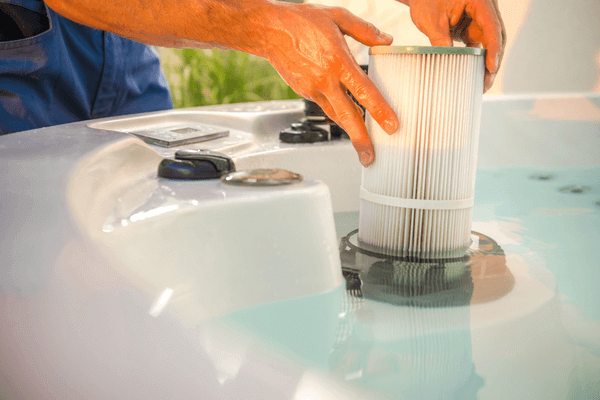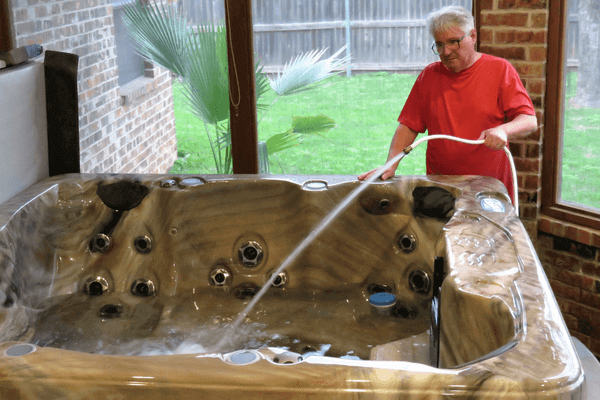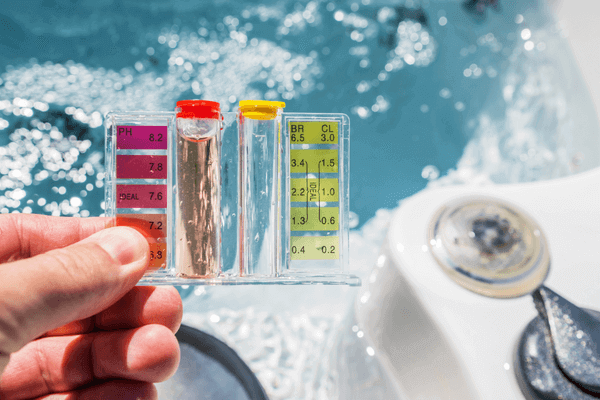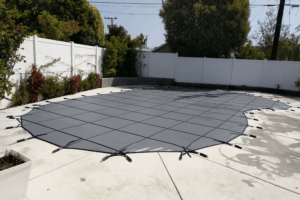
Pool Area Maintenance Tasks You Shouldn’t Skip
Even diligent pool owners miss key maintenance steps. Use this checklist to catch commonly forgotten tasks and keep your pool area safer and more efficient year-round.

Keeping up on hot tub care gives you a fun, safe place to entertain guests, soak away the stresses of the day, or get relief from the warm, agitated waters for minor physical pains. Proper hot tub maintenance keeps your water healthy while making sure your spa is mechanically sound, so it’s ready to go when you’re ready to use it. It also means protecting your hot tub from becoming an accidental drowning hazard that leads to one of the often-preventable tragedies that take thousands of lives every year. Whether you’re new to owning a home spa or you just want to make sure you’re doing everything you can to be a responsible owner, we have the top hot tub safety, care, and maintenance tips you need to know.
Many people think of hot tubs as small pools because both are popular backyard luxuries for entertaining and relaxing. While there are some similarities, they present different challenges to owners who want a safe, healthy environment for their families.
While there are differences, one primary way that pool and hot tub maintenance are similar is in their focus on the three C’s: Cleaning, Chemistry, and Circulation. Most of your hot tub care tasks will fall under one of these umbrellas, and the result of properly managing the three C’s is a hot tub that is ready when you need it to be.

You want a hot tub that is inviting to guests and able to offer an invigorating or relaxing atmosphere, whatever the occasion. That starts with making sure the hot tub and its area are clean. Start by removing any trash, leaves, or other debris that has accumulated around your hot tub. Trash in the hot tub area can easily end up contaminating your water, leading to more frequent deep cleanings.
All hot tubs will develop scum and need regular cleaning, whether they’re indoor or outdoor. While you should never use chemicals on your hot tub not specifically made for cleaning a spa, white vinegar on a sponge can be used to clean the shell and jets weekly. A net can be used to remove debris that’s blown in, the bottom and sides can be easily scrubbed with a soft-bristled brush, then a spa vacuum can be used to remove any dirt on the bottom of the spa. Wiping down outside surfaces with a 10% dilution of bleach is a great way to prevent mildew once you’ve cleaned it with vinegar and it’s dry. Every three months, you should drain your spa for a thorough cleaning of the tub inside and out, including any lines or fixtures.

When water is moving, its temperature and chemical balance stay regulated, while contaminants like algae have a harder time adhering to a surface they can grow from. As part of your hot tub maintenance, you will want to make sure your pump is circulating the water while the tub is in use and for at least four hours twice a day. This circulates the water, keeping it moving and regulated in periodic intervals. Effective circulation is also part of keeping your hot tub clean.
Your hot tub pump moves the water through a filter medium, most often a filter cartridge that is easy to install and remove. As the water is forced through the cartridge, contaminants become trapped in the tight weave of the cloth. When enough contaminants become trapped, it’s harder for your pump to push water through the system, leading to a rise in pressure. Anytime your system’s pressure is 8-10 psi higher than normal, it’s time to pull the cartridge and clean it off by following the manufacturer’s directions–often a simple rinse with the garden hose. With proper hot tub care, these filters can last a full year before needing to be replaced.
Every pool or spa owner will quickly become an expert in amateur applied chemistry. In order to maintain healthy water, you have to check the concentration levels of specific chemicals and make adjustments to those concentrations by adding in concentrated solutions in set amounts. Your chemistry works against microscopic threats to your hot tub’s health, like bacteria, algae, and mold spores, stopping them before they have a chance to proliferate and take hold. While it may be intimidating for some of us who have been out of school so long, making sure your chemicals are properly managed makes your hot tub maintenance easier.

While these levels are the ones you’ll check regularly, your hot tub care and maintenance can include other solutions meant to improve hot tub water safety. Enzymes can be added to break down organic compounds, clarifier helps keep the water from becoming cloudy, and periodic shock treatments add large doses of sanitizer to power through contaminants after big storms, large parties, or other high-risk situations.
As part of your maintenance, hot tub safety should be front and center. While they may not be as large as a swimming pool, unsecured hot tubs still present a drowning risk to your friends and family–especially the young, the elderly, and pets. The National Drowning Prevention Alliance notes that a lack of safety barriers is a contributing factor in the majority of accidental drownings, so preventing unsupervised access to the hot tub is key for any responsible spa owner.
Care of these hot tub safety accessories is easy. They’re made from durable materials and often require no more than a rinse or light scrubbing with a soft-bristled brush. This can easily be accomplished as needed during your regular hot tub maintenance.
Protecting your spa is easy, and there’s no cost or obligation to get started. Your local All-Safe Pool installer will take measurements, inspect your hot tub area for hazards that need to be mitigated, and design a plan to meet your needs. Then you’ll get a written estimate that lays out your protection options and how affordable peace-of-mind can be. Make sure your friends, family, and pets are safe. Schedule your free quote from an independent installer today.

Even diligent pool owners miss key maintenance steps. Use this checklist to catch commonly forgotten tasks and keep your pool area safer and more efficient year-round.

Learn the most common pool winterizing mistakes and how to avoid them for a safer, cleaner backyard during the off-season.

Mesh pool covers offer reliable winter protection by keeping out debris and preventing accidents. Learn why they’re a smart choice for safety and peace of mind.
Enter your zip code to locate an independent installer in your area
Enter your zip code to locate an independent installer in your area

Due to the many variations in monitors, phones, and browsers, color samples and product examples may appear different on different screens. Computers and mobile devices are not all calibrated equally and color reproduction on the Internet is not precise. The same is true for printed items such as brochures and other sales literature.
In addition, the colors of our products photograph differently under different lighting conditions. For example, photos taken in full sunlight will vary from photos taken on a cloudy or overcast day. Similarly, shadows from nearby objects can affect the color and transparency of our products. If a precise color or specific shade is important, please inspect the actual color of your product prior to installation.
Many of our products’ materials are not available through typical stores and vendors and therefore must be custom manufactured specifically for our use. In order to control costs and provide you with the best value possible, our raw materials are produced in large batches and can often take several months to receive. The colors of our materials can, and often do, vary slightly from batch to batch. Although we make every effort to minimize color variations, we cannot be responsible for these differences when they occur. If a precise color or specific shade is important, please inspect the actual color of your product prior to installation.
For example, we use the name “putty” to describe some of our products. Your idea of the color “putty” may be different than someone else’s idea of “putty”. In addition, products may have the same color name but may not be the exact same color. For example, we have different shades of “black”. Please do not order using color names as your only guide. If a precise color or specific shade is important, please inspect the actual color of your product prior to installation.
If it is important that your product be an exact color or shade, it is highly recommended that you inspect the actual product prior to its installation and address any concerns with your local independent installer. Most independent installers do not offer refunds or accept returns due to color variations.